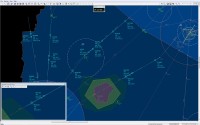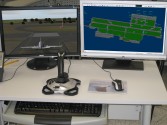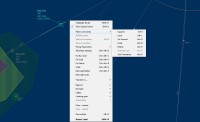Pseudo-Pilot
The pilot module was designed as a supporting position to ARTMACS’s main role of training air traffic controllers. As a consequence, the main target in developing this module was efficiency in controlling as many units (aircraft and vehicles) as possible.
The Pilot module can be configured in 3 working modes:
- 3D mode, with 3D tail view
- 2D mode, the pilot has only the radar screen
- Combined mode, with 3D tail view plus radar screen
Features:
- Commands issued by mouse or joystick
- Commands for airborne aircraft:
-
- speed, altitude, heading, rates (climb, descent, turn)
- intercept flight plan, route and radial
- orbit, fix hold and refuel
- land (with touch-and-go or using braking device), go around
- join or split formation
- altimeter, transponder, highlight route
- Commands for aircraft on the ground:
-
- speed, heading
- startup and stop engine (with sound in the tower cab)
- pushback, taxi (expedite), line-up, take-off
- Other commands: damage (fire, smoke), lights, landing gear, flaps, spoilers
- Reports: overflying a point, reach (altitude, speed, heading), cross (altitude, speed)
- Quick access to flight information through electronic strips
- Touch screen for radio and intercom
- Footswitch operation
- Aircraft control surfaces are fully active and visible
- Automatic load distribution for pilots in the same sector
- Manual transfer of aircraft between pilots in the same sector
- Unlimited number of units (aircraft and vehicles) per pilot
- Autopilot (according to flight plan)
- Instructor can act as pilot
- Simple user interface, students can act as pilots

















